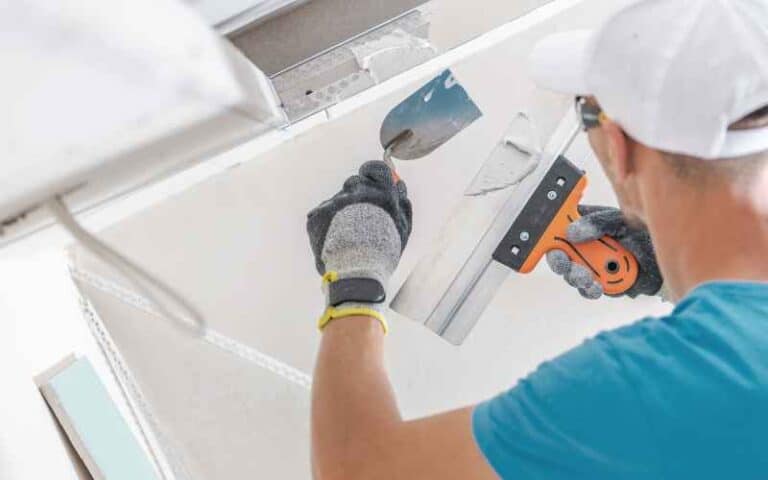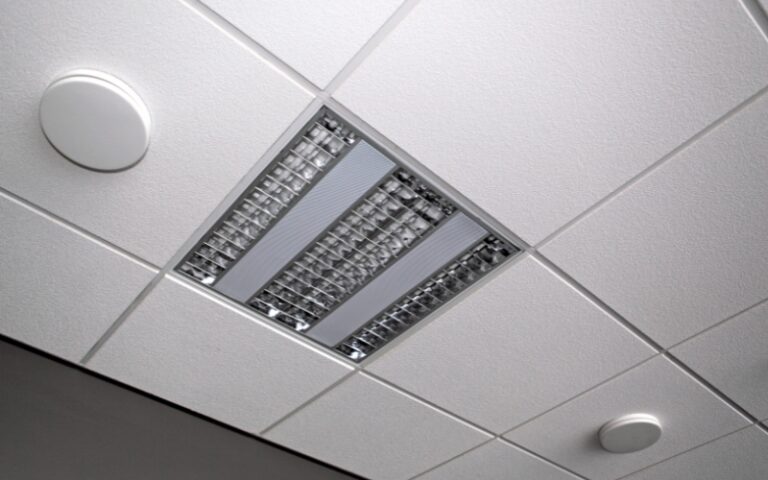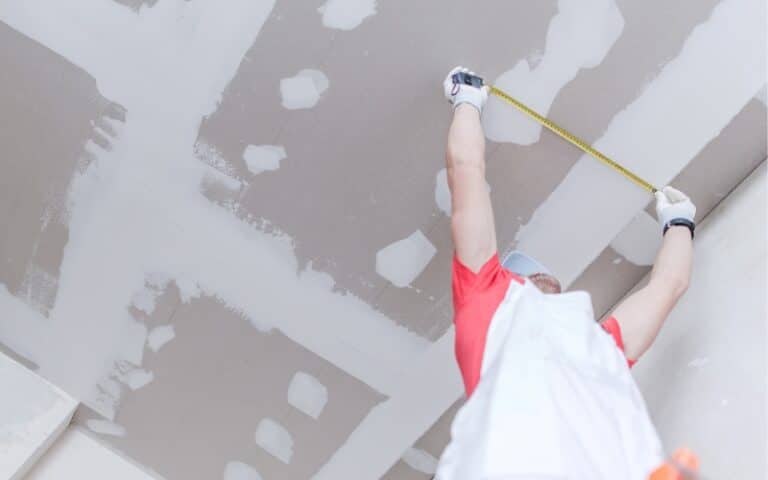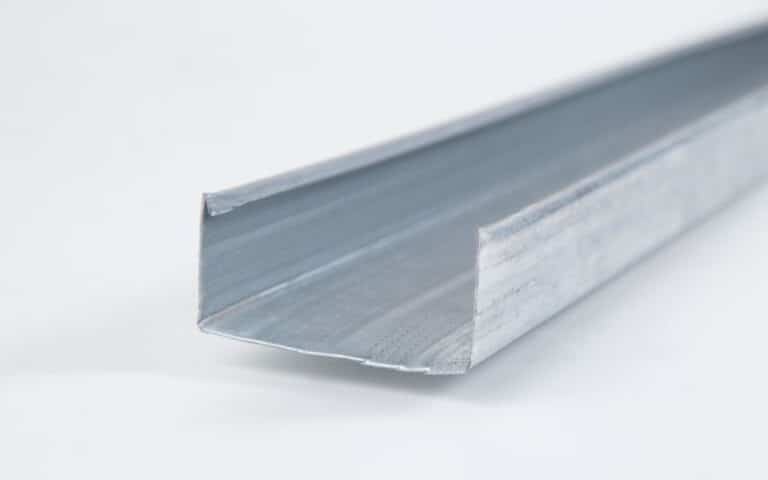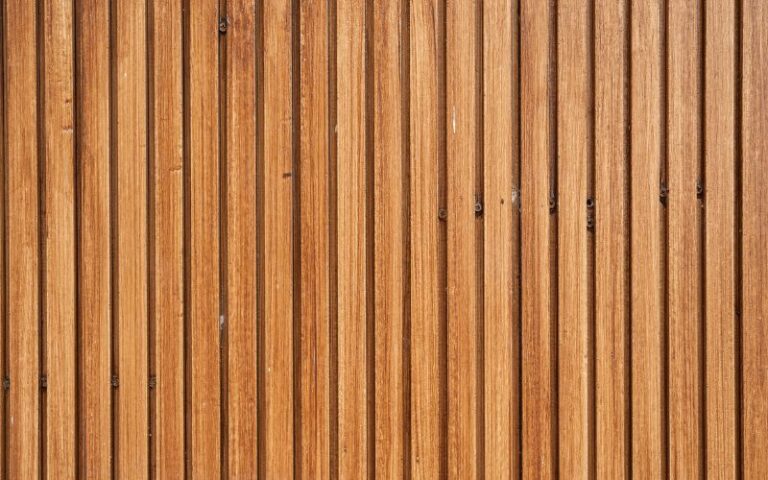Filling a drywall hole is a common scenario every homeowner eventually faces. One reason for that is that drywall lacks structural strength.
Thus, a dent in your drywall setup is bound to happen sooner than later. Naturally, your first action would be to correct the eyesore by patching the hole.
However, the repair process sometimes causes another headache when the drywall patch turns out uneven. This situation is usually a breaking point for many people.
Knowing why your drywall patch turns out uneven is easy to figure out. Yet, most people are usually too exhausted from the repair process to inquire. One common cause of an uneven patch is using too much filler to clog the hole. On the other hand, you can also have an uneven patch when you use too little filler.
There are a few other reasons your drywall repair may yield an uneven patch. Thankfully, you’d only need to correct the unevenness rather than starting from scratch.
This article will detail why you can have uneven drywall patches. Surely, you’ll also learn the best ways to fix the uneven patch and have your drywall setup looking great again.
Ready for a Drywall Quiz?
Why Are There Depressions on My Drywall?
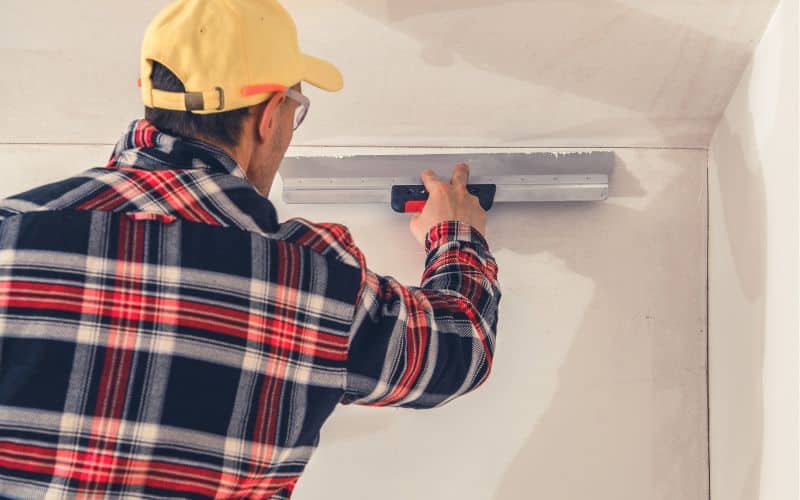
Cracks, impact, leaks, loose joint tape, and termite damage are the common causes of drywall depression. The damage starts on a small scale in all cases and gets worse.
Since drywall lacks strength compared to most materials, it’s also more prone to damage. But it makes up for that with its weight, cost, and flammability.
The table below outlines the causes of drywall depressions mentioned above and summarizes how they form.
| Cause of Drywall Depression | Description |
|---|---|
| Cracks | Cracks may form due to moisture buildup or poor installation. |
| Impact | The impact from individuals and objects like furniture or doorknobs can dent drywall. |
| Leaks | Leaks from doors, roofs, and windows can cause wetness and drywall damage. |
| Loose joint tape | Poor fastening during installation and moisture can loosen the joint tape. |
| Termite damage | Termites invading your drywall can cause varying degrees of damage. |
You can also get drywall depression when fixing a hole in your drywall. Thus, using too little or too much filler when fixing a hole is a common cause of depression.
But the latter is more common because people tend to overuse fillers. However, that’s a forgivable mistake when using drywall putty for the first time.
You may hear it works like magic, so you want to pack as much as possible into the hole.
The result is that the area carrying the hole will bulge from the rest of your drywall. So the original drywall will look depressed compared to the patch that you made.
But the situation turns out the other way around when you use too little drywall putty. The depression will be on the hole, not the wall, as in the first instance.
This scenario can happen when using the last part of your drywall putty. Perhaps you underestimated the size of the hole and ran out of putty.
A good piece of advice is always to have some extra filler at hand just in case you need more during a project. Also, you may find other holes in the wall when patching the first one.
Lastly, you can get drywall depressions by installing drywall over an existing setup. In that case, you’ll have the new installation higher or lower than the previous one.
Three Best Ways to Smooth Out Uneven Drywall
Depending on the size of the affected area, you can opt for sanding, scraping, or skimming. Sanding works great for a small wall area with the filler bulging out.
In that case, your only task is to make that part of your drywall even again. So, you can use the 120-grit sandpaper to smooth out the uneven part.
But be careful not to apply too much pressure when sanding, or it’ll become too flat. The next option is scraping, which works great when you have ridges on your drywall setup.
Ridges usually take up more space, so sanding at first will be tedious. However, you can still come back to sand any uneven parts after scraping the ridges.
Scraping works best with a large drywall knife so you cover a wide area with each stroke.
Like sanding, apply only slight pressure to the drywall knife when removing the ridges to avoid new dents on the wall.
However, you can adopt skimming when you still notice unevenness on your drywall after sanding and scraping.
Applying a skim coat may initially seem challenging, but careful execution can help you get through it.
You’d need the following tools to apply the skim coat to your drywall:
- All-purpose joint compound
- Damp rag
- Drywall knife
- Drywall primer
- Heavy nap paint roller (½ inch or longer)
- Mud pan.
The first step to applying the skim coat is preparing the walls with the drywall primer. Using a water-based drywall primer that’s also stain-sealing is the best option.
A good choice is the Zinsser Bulls Eye Water-Based Primer. The primer here helps the drywall mud have better adhesion to the wall.
Next, use the joint compound to fill holes in the wall if you spot any. Ensure to let the compound dry properly before the next step.
The joint compound in the link above comes ready to use, so you can apply it immediately. For other products, ensure the consistency is similar to mayonnaise.
Use the heavy nap paint roller to apply the joint compound to the wall in thin, even coats. Using stacked sections of 4 feet × 4 feet is a good application method.
Also, avoid filling dips with thick coats since you’ll apply multiple compound layers. After ensuring the joint compound is dry, smooth the surface.
Use the drywall knife to smooth the mud from the top corners to the middle of the wall. Use the damp rag to wipe off excess mud from the knife at intervals.
You can switch to the bottom corners after finishing the top section. The mud will form ridges in the middle of the wall since the sections meet midway.
Use the mud knife to wipe the ridges off horizontally. Allow the mud layer dry to see if you can still notice any unevenness on the surface.
You can apply extra mud layers only if the wall is uneven. Ensure to let each layer dry properly before applying the next. Also, each new mud layer should be perpendicular to the previous one.
When you’ve achieved the desired evenness on the wall, you can use the sandpaper to prepare the wall for painting. As always, apply only slight pressure to avoid damage.
Finally, you can paint the wall with any color you choose to achieve your desired look.
How to Make Drywall Even at Seams?
Having uneven drywall seams is a common feature of every large-scale drywall project. That’s because you’ll have to install the drywall sheets in sections across the wall.
Thus, they’ll meet at a point where there’s a small space in-between called the seam. Leaving the seams open always proves costly because any extra layer will look out of sorts.
However, you can avoid that by filling the seams with the joint compound and taping the area. That will yield an even surface for further work during your project.
The first step to embed the tape is to fill the seam with a joint compound. After applying the compound, you can then place the tape on the area over the seam.
Using paper tape or mesh tape works for the project. Either choice is fine, although paper tape is more popular.
Next, apply a second layer of joint compound over the tape and feather the edges. A bevel trowel will help you scrape excess mud and leave just the right amount.
Apply one or two extra layers after the first to firm the seam area and achieve evenness. Finally, you can sand the area to achieve a neat finish.
Always ensure you allow mud layers to dry in-between applications. Also, apply only slight pressure when sanding to avoid over-sanding the area.
After sanding the seam area, you can paint or apply any other finishing you choose.

